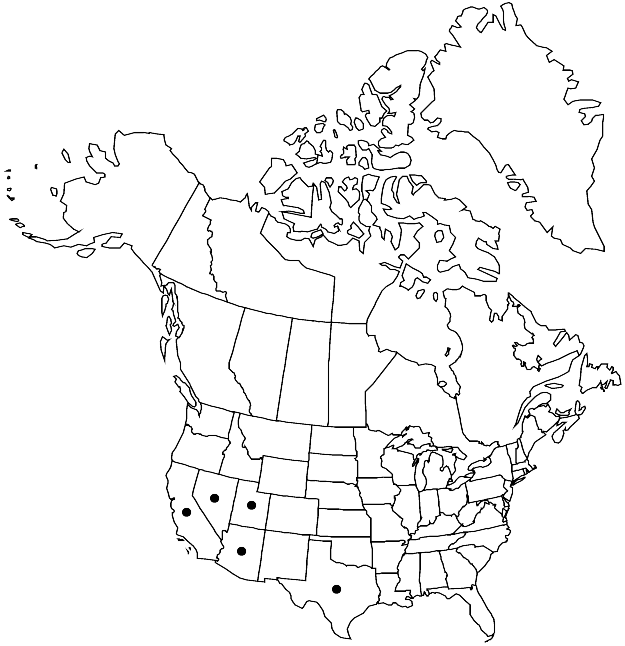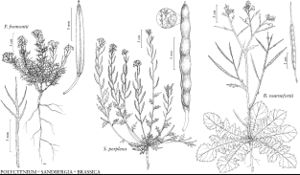Brassica tournefortii
Ill. Observ. Bot., 44, plate 20A. 1773.
Annuals; densely hirsute proximally, glabrescent distally. Stems usually branched basally, (widely) branched distally, (1–) 3–7 (–10) dm. Basal leaves: (rosettes persistent); petiole (broad) 2–10 cm; blade lyrate to pinnatisect, 2–30 cm × 10–50 (–100) mm, (margins serrate-dentate), 4–10 lobes each side. Cauline leaves sessile; blade (reduced in size distally, distalmost bractlike), base tapered, not auriculate or amplexicaul. Racemes not paniculately branched. Fruiting pedicels widely spreading, 8–15 mm. Flowers: sepals 5–4.5 × 1–1.5 mm; petals pale-yellow, fading or, sometimes, white, oblanceolate, 4–7 × 1.5–2 (–2.5) mm, claw 1–3 mm, apex rounded; filaments 2.5–4 mm; anthers 1–1.3 mm; gynophore to 1 mm. Fruits (shortly stipitate); widely spreading to ascending (not appressed to rachis), torulose, cylindric, 3–7 cm × 2–4 (–5) mm; valvular segment with 6–12 (–15) seeds per locule, 2.2–5 cm, terminal segment 1 (–3) -seeded, (cylindric, stout), 10–20 mm. Seeds light reddish-brown or black, 1–1.2 mm diam.; seed-coat prominently reticulate, mucilaginous when wetted. 2n = 20.
Phenology: Flowering Feb–Apr.
Habitat: Roadsides, waste places, old fields, washes, open desert areas intermixed with desert shrubs
Elevation: 0-800 m
Distribution

Introduced; Ariz., Calif., Nev., Tex., Utah, Europe, Asia, Africa, also in nw Mexico, Australia
Discussion
Brassica tournefortii was first reported from California (Imperial, Riverside, and western San Bernardino counties) by W. L. Jepson ([1923–1925]), with the first collections appearing from southern California in 1941 (R. C. Rollins and I. A. Al-Shehbaz 1986), Arizona in 1959 (T. H. Kearney and R. H. Peebles 1960), Nevada in 1977, and Texas in 1978 (D. E. Lemke and R. D. Worthington 1991).
Selected References
None.
Lower Taxa
"elongated" is not a number."thick" is not a number."dm" is not declared as a valid unit of measurement for this property."dm" is not declared as a valid unit of measurement for this property.
